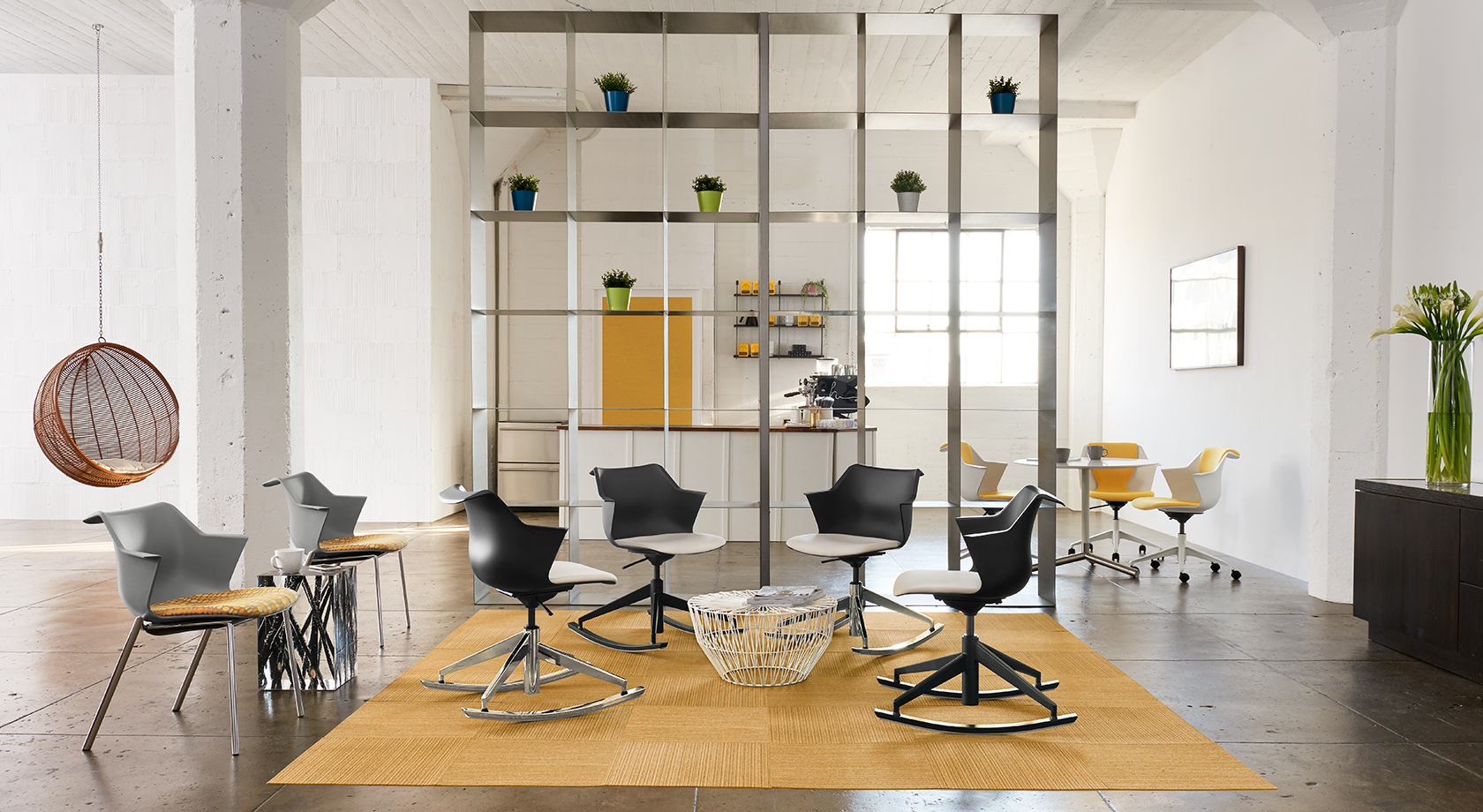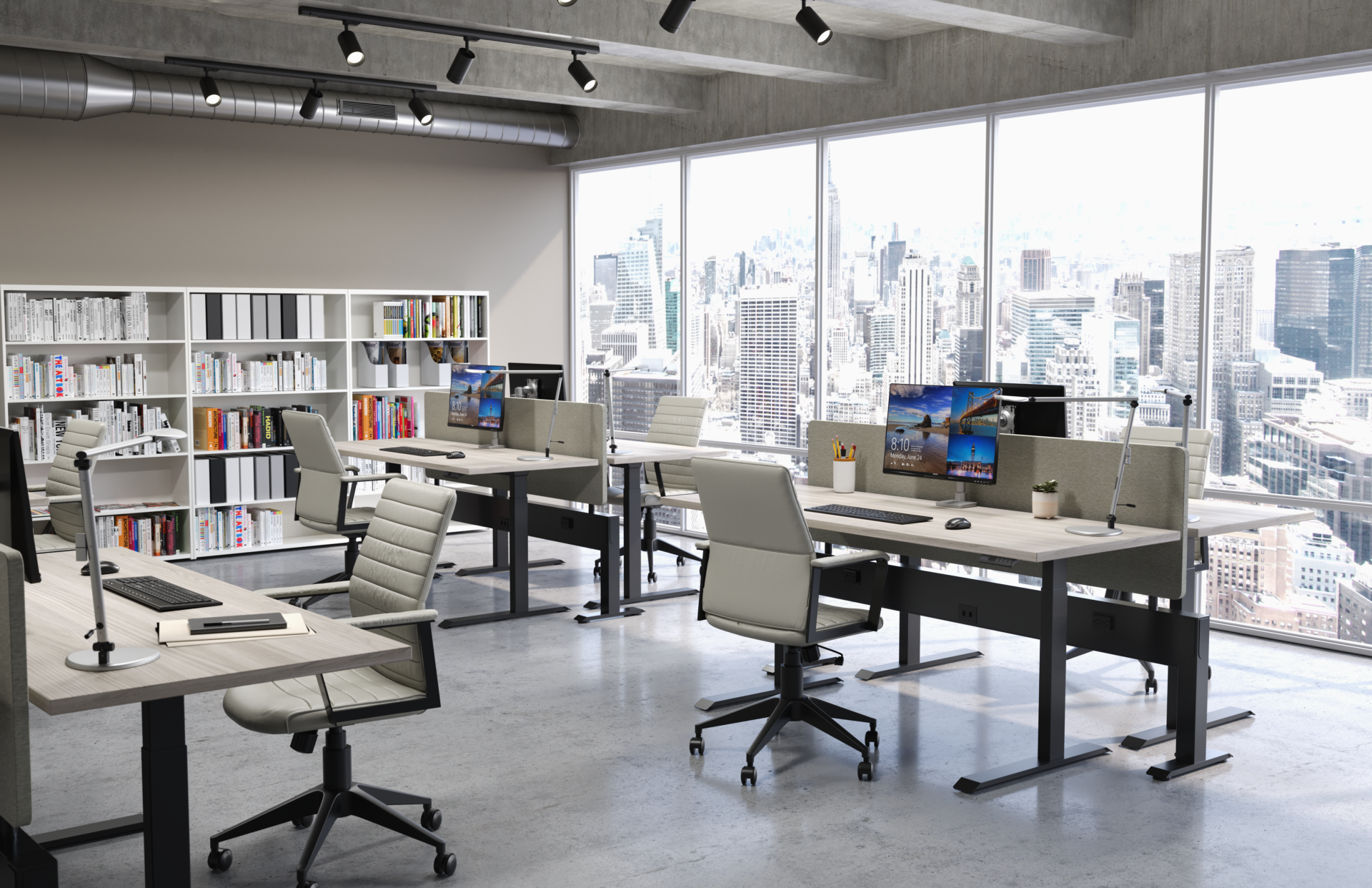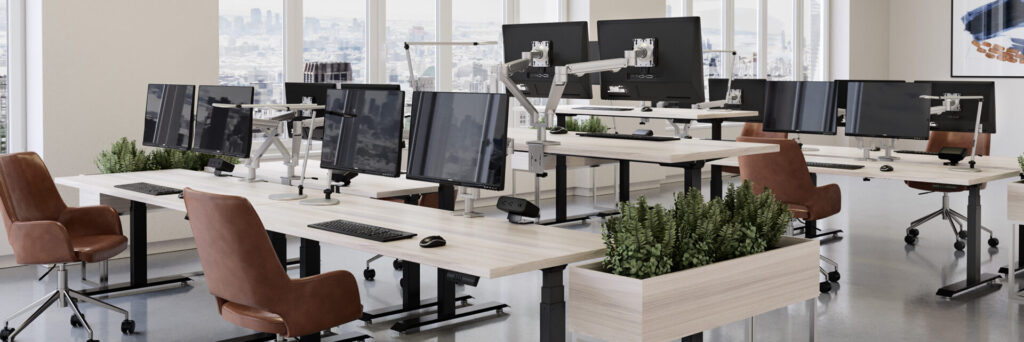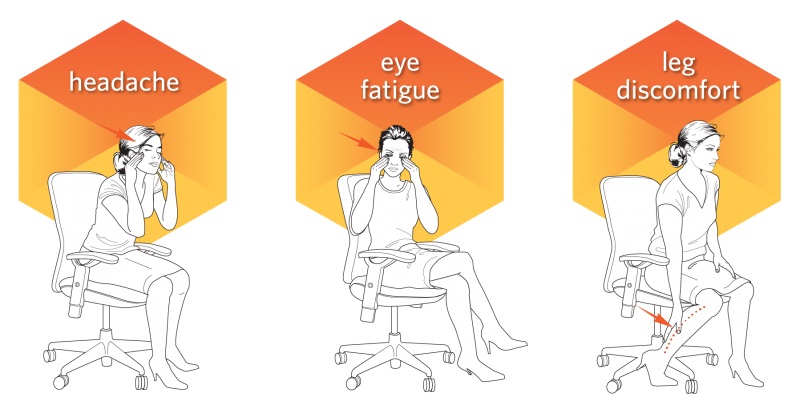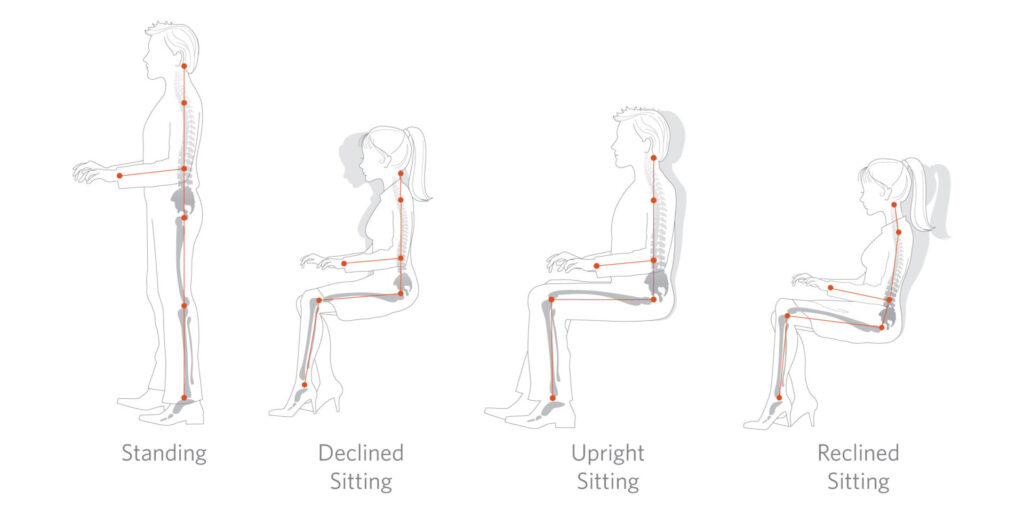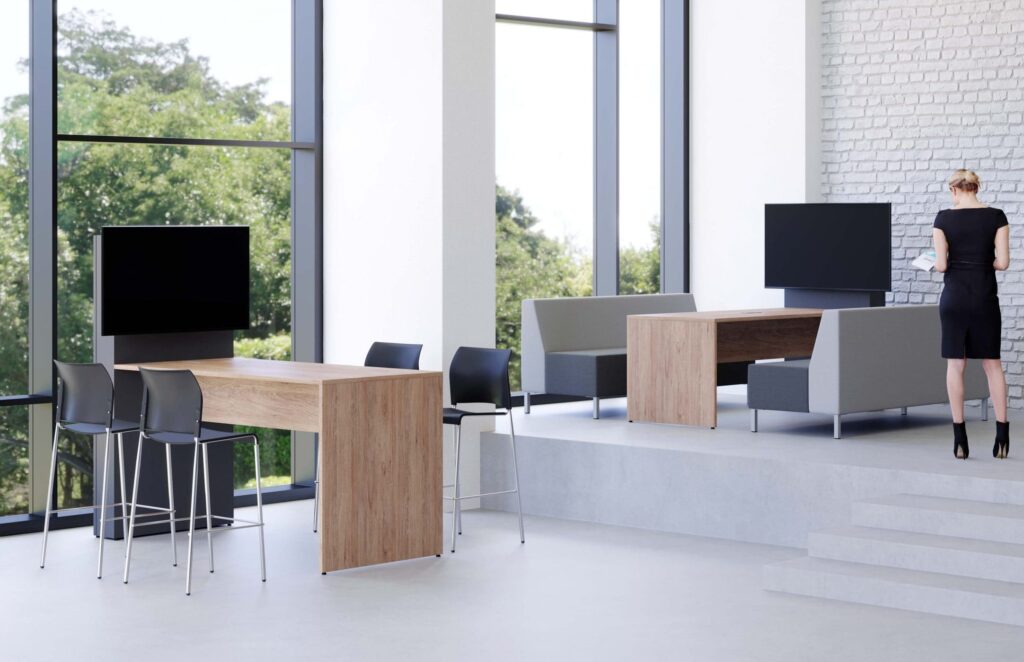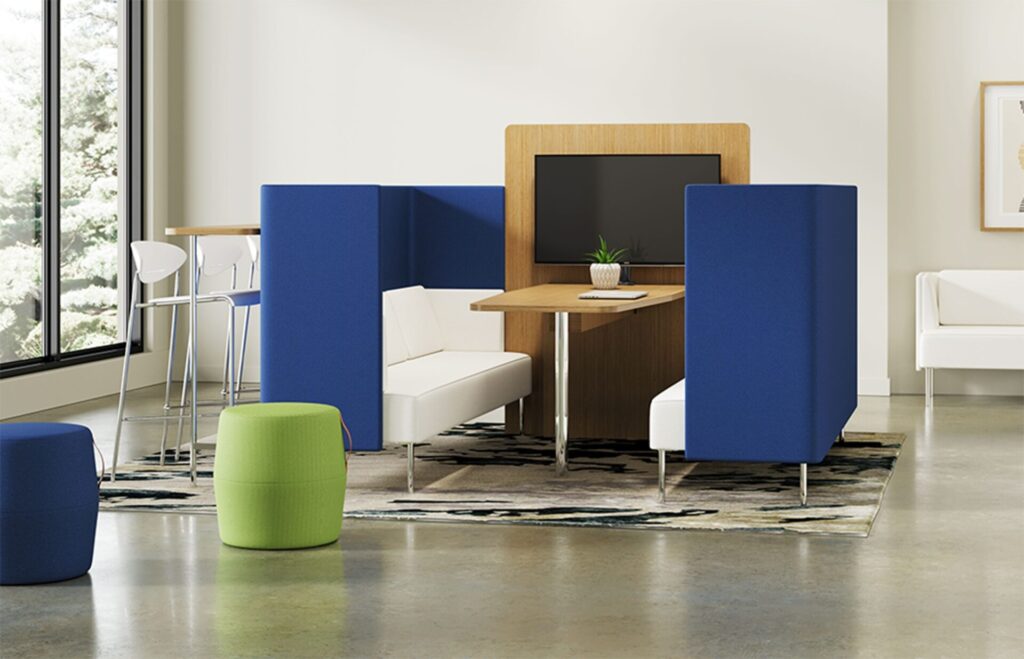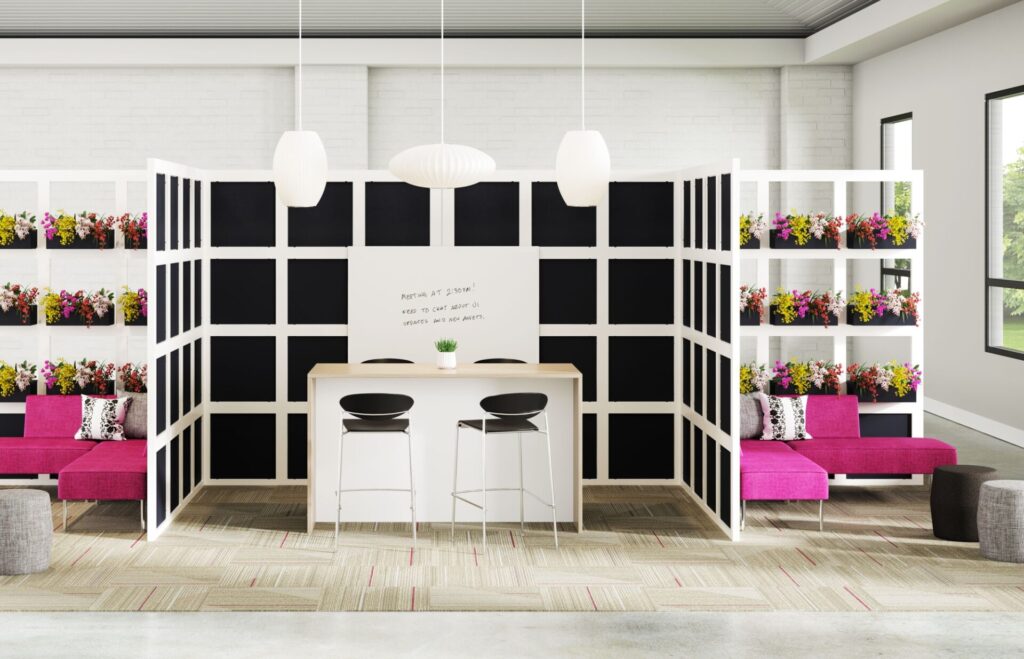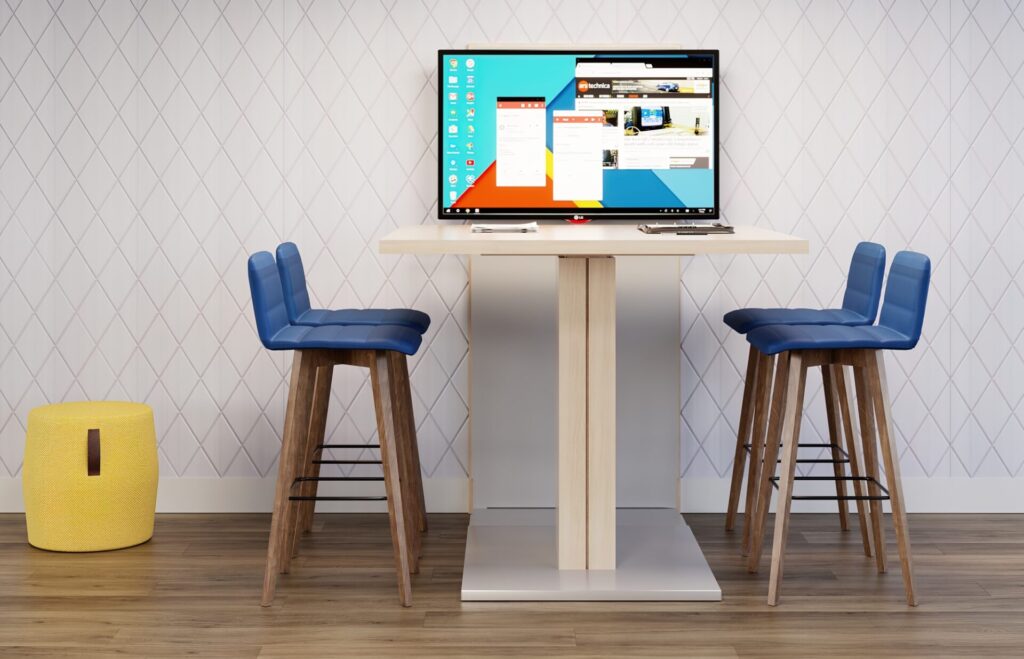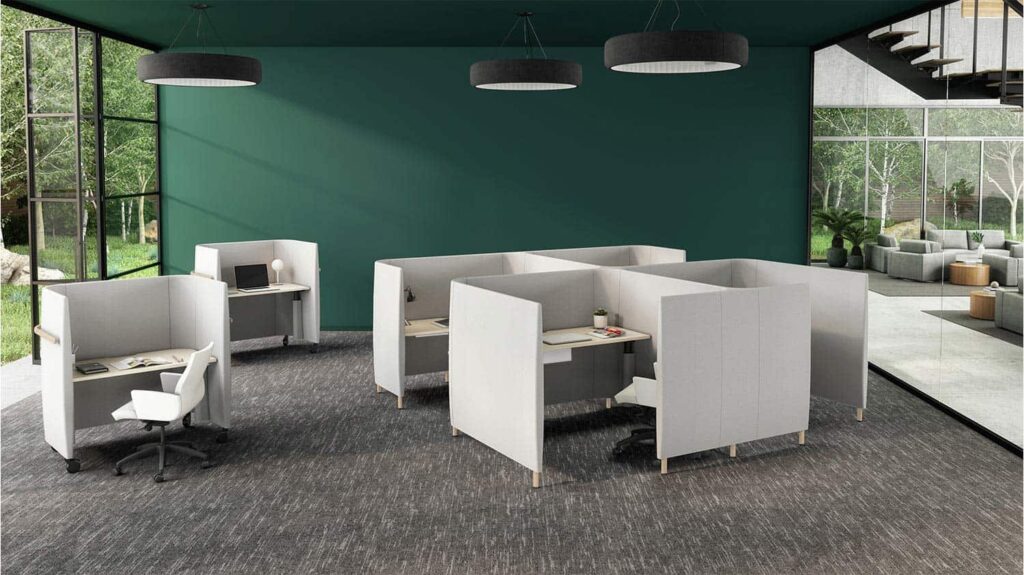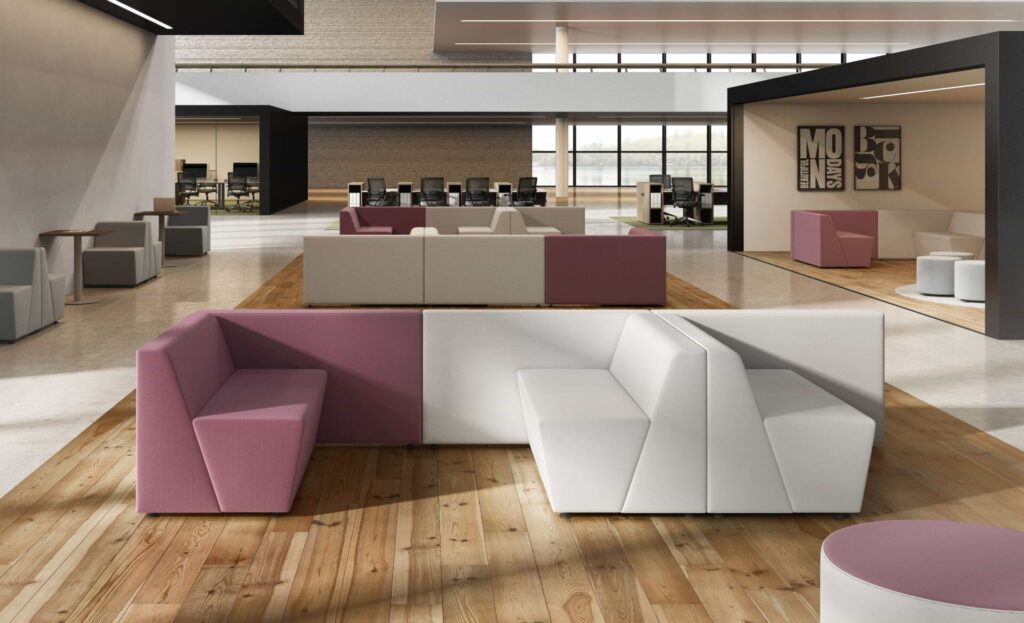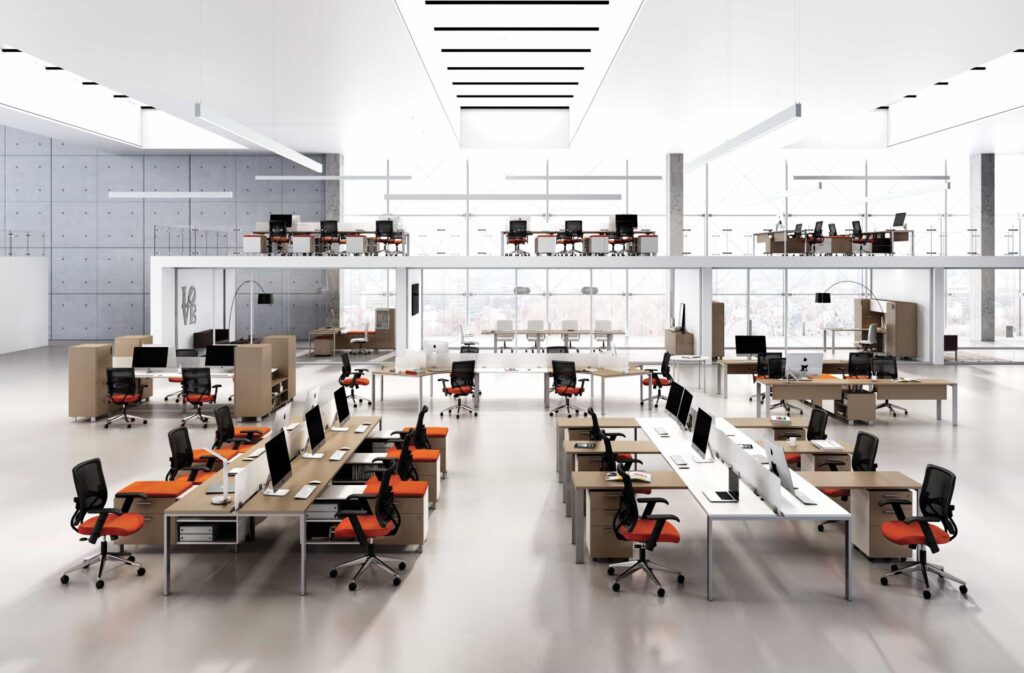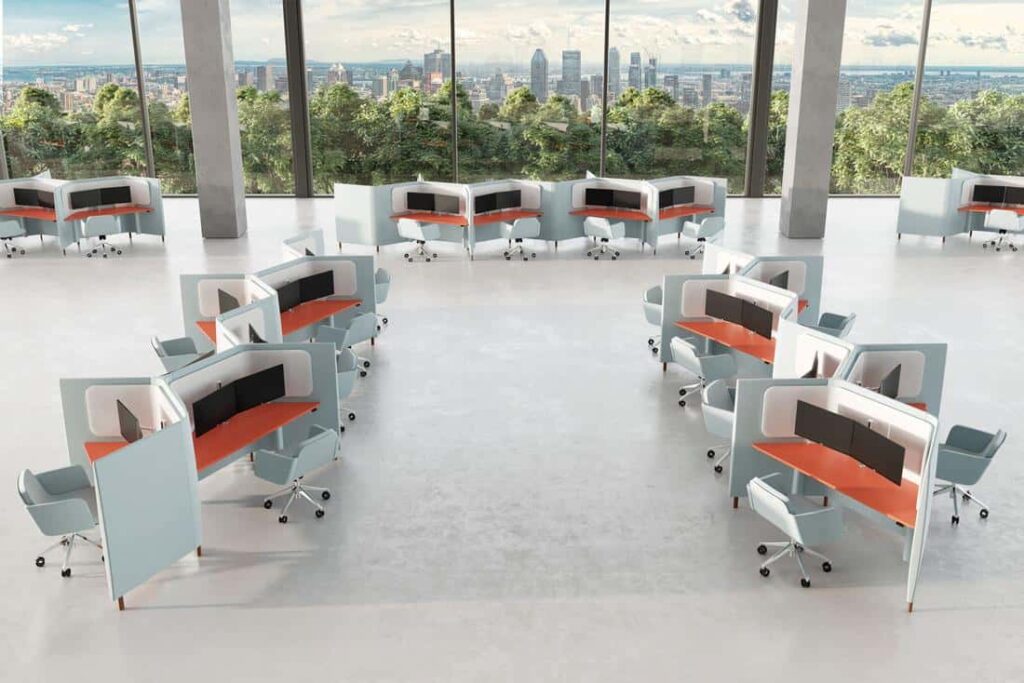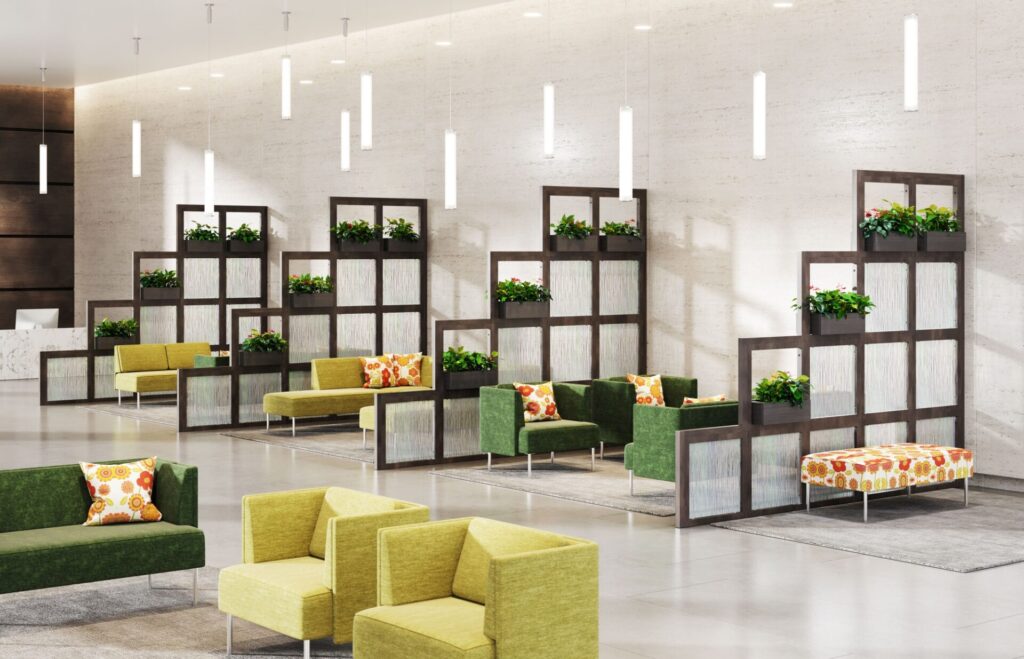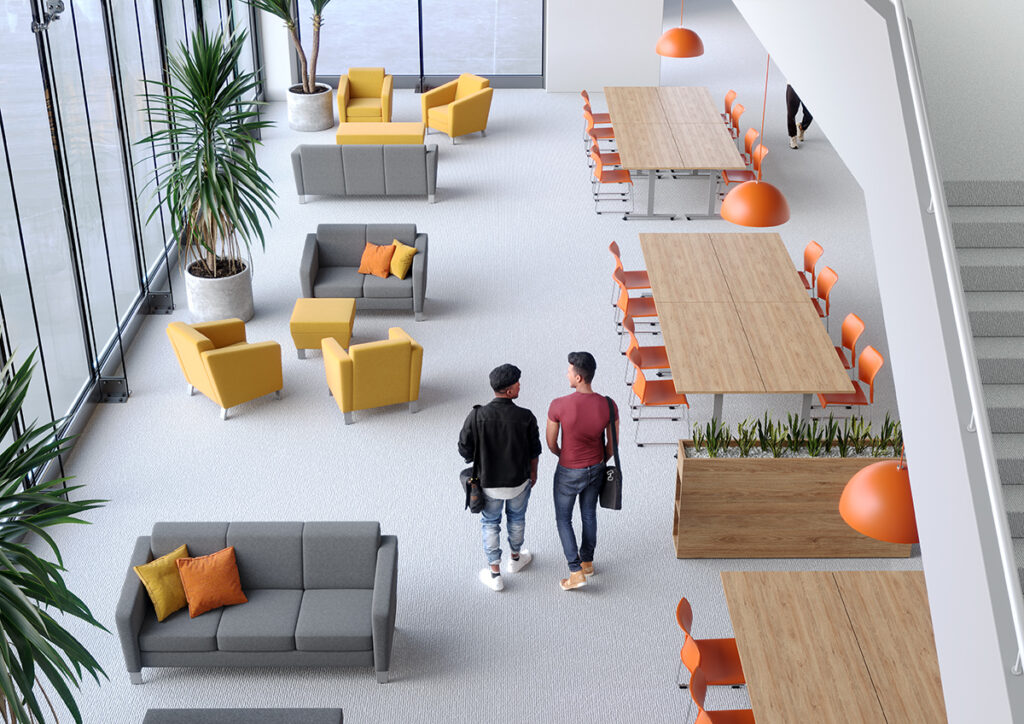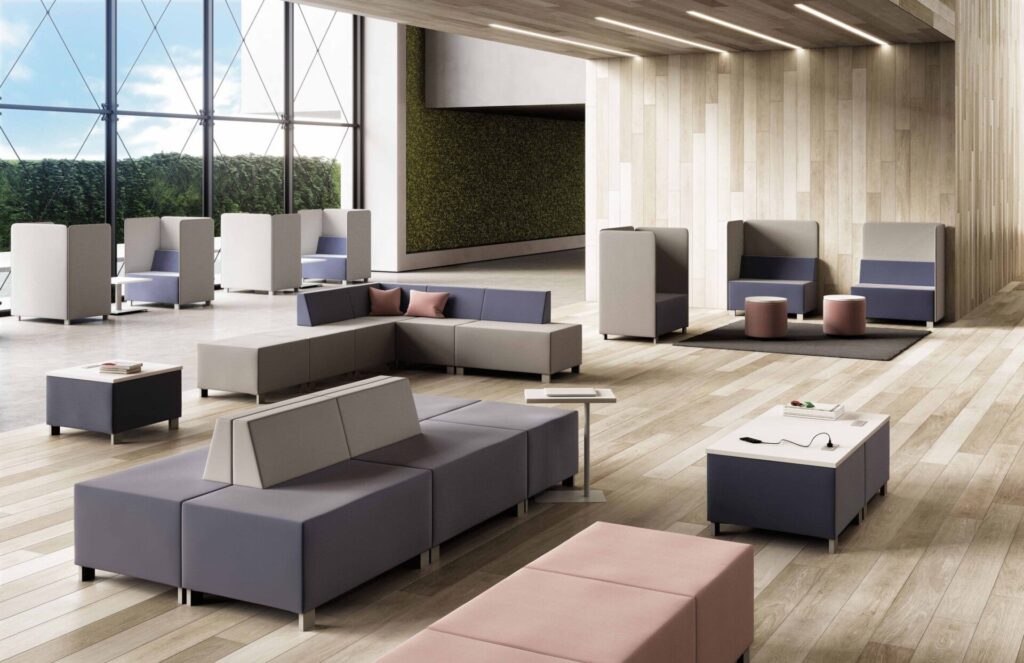Designs for Dialogue

In today’s fast-paced, collaborative work environment, the design of conference rooms and meeting spaces is crucial to the success of a gathering.
Whether you are hosting a business meeting, a brainstorming session, or a client pitch, the seating arrangement can significantly impact productivity, comfort, and overall experience. D2 Office Furniture & Design Inc. is the ideal partner to help businesses create optimized, collaborative environments. As a trusted supplier working with dozens of leading manufacturers, D2 offers the expertise and a wide selection of products that allow businesses to design and furnish their spaces to enhance communication, creativity, and productivity.
This blog will explore how to optimize conference room seating to ensure that meetings are more efficient, engaging, and comfortable for all participants.
Additionally, we’ll dive into studies and research that highlight the importance of thoughtful seating arrangements, explore the growing influence of the resimercial movement on the design of meetup spaces, and review some top vendors and products from leading seating all available through D2 Office Furniture & Design Inc.
The Importance of Seating Arrangements
How you arrange seating in a conference room or meetup space influences the flow of conversation, level of engagement, and even the tone of the meeting. A poor seating arrangement can hinder communication, cause distractions, or leave attendees feeling disengaged.
On the other hand, a well-thought-out seating plan fosters collaboration, maximizes comfort, and encourages participation. But don’t just take our word for it—research backs up the importance of thoughtful meeting spaces and seating choices.
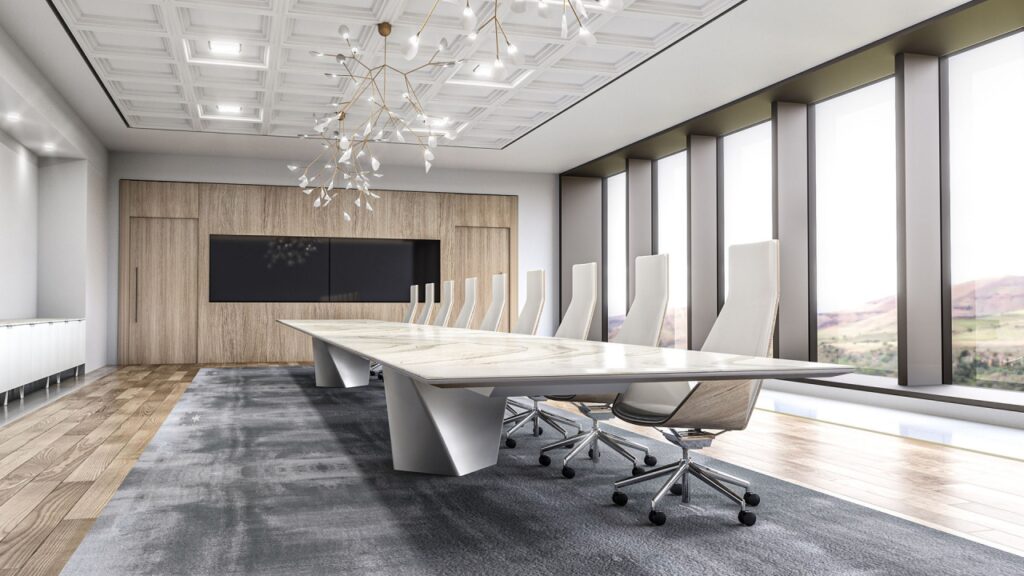
Research-driven insights into Meeting Spaces and Seating
Numerous studies have shown the influence of seating arrangements on the effectiveness of meetings, group dynamics, and even decision-making. Here are some key insights from recent research:
- Seating Affects Communication and Collaboration
A study conducted by the University of Groningen found that seating arrangements that promote face-to-face interaction lead to more successful collaboration and idea generation. When participants are seated in a way that facilitates easy eye contact and non-verbal communication, they are likelier to engage in open, productive discussions. In contrast, seating that isolates individuals or puts them at an odd angle from one another can hinder the flow of ideas.
The research suggests that collaborative seating arrangements—such as circular or U-shaped layouts—create a sense of equality among participants, helping to break down hierarchical barriers. This style encourages open discussions and idea sharing, which is crucial for brainstorming and problem-solving.
- Comfort Enhances Focus and Productivity
Research published in the Journal of Environmental Psychology emphasizes the importance of comfort in the workplace. According to the study, ergonomic seating and appropriate furniture significantly improve focus and reduce meeting distractions. Attendees who are comfortable in their seats are less likely to experience physical discomfort, which can lead to a better overall meeting experience.
The study also found that ergonomic designs that support good posture can improve cognitive function, helping participants remain engaged and contribute more effectively. In particular, seating with adjustable features (such as lumbar support and armrests) can increase comfort levels, leading to better attention and less physical strain during longer meetings.
- The Impact of Room Layout on Decision-Making
A notable study from Harvard Business Review explored how seating arrangements influence group decision-making. The researchers discovered that when teams are arranged so that all members can see each other clearly, decision-making becomes more democratic and collaborative. In contrast, seating that separates members (such as traditional rows) can lead to less participation from quieter members, who may feel disconnected.
Furthermore, the study found that round tables and circular seating layouts foster group cohesiveness and improve consensus-building, especially during brainstorming sessions or collaborative work. By allowing each participant equal visibility and access to others’ ideas, these seating arrangements encourage more diverse perspectives, resulting in better decision outcomes.
- Technology Integration and Productivity
As more companies incorporate technology into their meetings, understanding how seating affects tech usage is crucial. According to a Steelcase research on workplace design, meetings where technology (such as projectors, microphones, and video conferencing) is well-integrated into the space tend to have more productive outcomes. However, if seating arrangements obstruct access to screens or make it difficult for everyone to see the presentation, technology can become more of a hindrance than a help.
The study found that seating arrangements that accommodate both tech tools and human interaction tend to improve productivity. For example, seating that places participants in a semi-circle facing a screen ensures that everyone can see the content clearly while still being able to communicate with each other. This approach fosters both engagement with the content and open discussions.
- Flexibility and Adaptability
Research by Herman Miller, a leader in office design, emphasizes the importance of flexible workspaces. Adapting the conference room seating layout is crucial in today’s dynamic work environment, where teams change frequently. The study highlighted that modular seating systems, which allow teams to rearrange the room as needed, can increase collaboration and creativity.
The flexibility to reconfigure meeting spaces based on group size or meeting goals enables a more tailored experience. For example, during a small team discussion, seats arranged around a single table may be ideal, while for a larger presentation, the seating might be organized in rows facing a stage or screen. This flexibility is essential for accommodating varying needs in today’s collaborative, agile workplace.
- The Role of Lighting and Atmosphere
A study by Cornell University found that lighting and atmosphere significantly impact people’s moods and cognitive performance during meetings. The research revealed that well-lit rooms with natural light improve alertness and participation, while dim or poorly lit spaces can cause fatigue and disengagement.
The study also pointed out that lighting can influence how comfortable people feel in the room. Soft, ambient lighting tends to create a more relaxed, open atmosphere, while bright, focused lights can increase concentration but may also increase stress if overused. Adjusting the lighting based on the nature of the meeting—whether it’s a brainstorming session or a formal presentation—can help set the right tone and maximize productivity.
The Resimercial Movement: Changing the Design of Meeting Spaces
While traditional office spaces have been defined by rigid desks, formal seating, and industrial aesthetics, the resimercial movement has introduced a new paradigm, blending residential comforts with commercial functionality. This approach to office design is reshaping how we think about meeting spaces, making them more comfortable, flexible, and conducive to collaboration.

What Is the Resimercial Movement?
The term “resimercial” is a combination of “residential” and “commercial,” referring to a design approach that incorporates home-like elements into commercial environments. In practice, this means soft seating, cozy lounge areas, natural materials, and comfortable, informal layouts prioritizing style and function.
Research into workplace design trends, including a report by Gartner on the future of workspaces, highlights that the resimercial movement is driving the demand for spaces that feel less like traditional offices and more like home environments. This shift has been accelerated by the increase in remote work and flexible schedules, where employees now expect more comfort, personalization, and a relaxed atmosphere in their workplace environments.
How the Resimercial Movement is Shaping Meetup Spaces
The rise of the resimercial movement has influenced modern meeting areas’ materials, design, and layout. Here’s how it is changing the way conference rooms and meetup spaces are being designed:
- Comfort and Informality: In response to the traditional, often sterile office environments, modern meeting rooms now feature plush chairs, sofas, and lounges that encourage relaxation and open communication. This more relaxed atmosphere fosters creativity and reduces stress, helping to enhance engagement and participation. Companies opt for soft seating arrangements such as armchairs and beanbags, creating a less formal atmosphere where employees feel comfortable sharing their ideas.
-
- Use of Natural Materials: Resimercial design incorporates natural materials such as wood, stone, and plants into office and meeting room spaces. These elements create a more grounded, inviting atmosphere. For instance, wooden tables and biophilic design elements (like indoor plants) bring a sense of calm and focus to meeting areas, improving mental well-being and productivity.
-
- Flexible Layouts: The idea of adaptable, multifunctional spaces aligns with the resimercial approach. Modular furniture, movable chairs, and adjustable tables allow the space to be customized based on the meeting’s needs. Whether you need a casual space for a team brainstorming session or a more structured environment for a formal presentation, the flexibility of the layout supports a wide range of activities.
-
- Home-Like Ambience: Modern meeting spaces increasingly feature comfortable lighting, soft carpets, and acoustic treatments that reduce noise distractions, mimicking the cozy, familiar feel of a living room. Cushioned benches, open shelving, and even wall artwork add a more personal touch, making the space feel more welcoming and less like a traditional corporate setting.
-
- Wellness Integration: Incorporating wellness into the design of meeting spaces is another aspect of the resimercial movement. This might include seating that promotes good posture, quiet zones for mental breaks, and areas that incorporate natural light to enhance mood and productivity.
Technology Integration and Productivity
In today’s tech-driven workplaces, the integration of personal communication devices, laptops, tablets, and reliable connectivity has become an essential component for effective meetings and collaborative environments. Seamlessly integrating technology into the design of conference rooms and meeting spaces is not only a matter of convenience but also a driver of productivity, creativity, and collaboration. However, this integration must be carefully considered to avoid common pitfalls where technology becomes a barrier instead of enhancing communication.
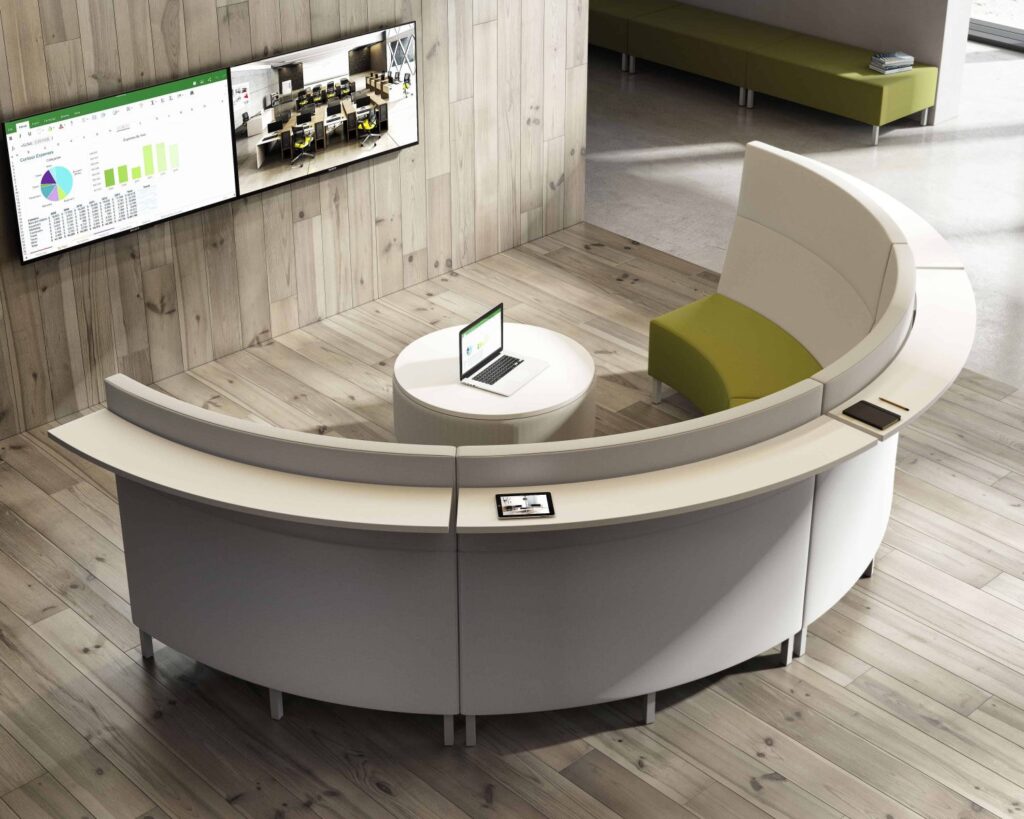
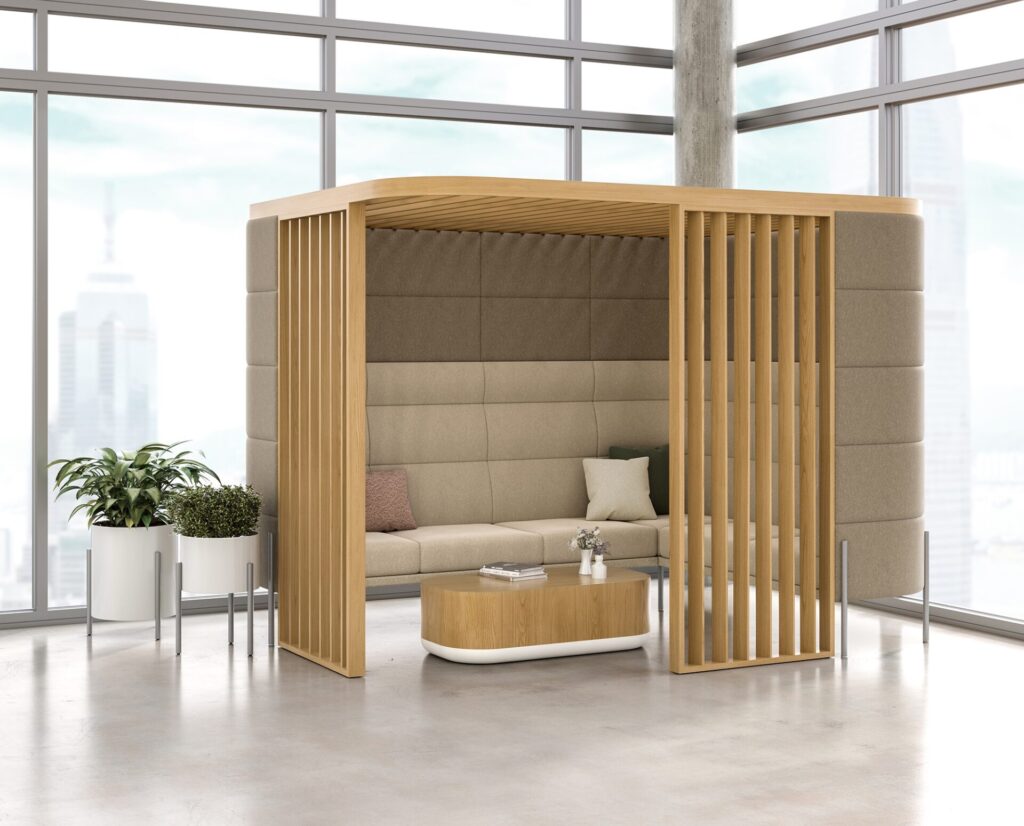
The Role of Personal Communication Devices, Laptops, and Tablets
In modern meetings, personal communication devices such as smartphones, laptops, and tablets have become indispensable tools for participation. These devices allow attendees to access digital resources, take notes, and participate in real-time collaborative efforts during meetings. However, to fully leverage their potential, these devices must be supported by the proper infrastructure within the meeting space.
- Laptops and Tablets for Mobility and Real-Time Collaboration: Laptops and tablets are crucial for remote work and hybrid meetings. They enable team members to access shared documents, collaborate on digital whiteboards, and contribute to virtual discussions. A Cisco study found that 67% of employees prefer hybrid meeting setups, which involve in-person and virtual participants using laptops or tablets to bridge the gap between remote and on-site teams.
-
- Smartphones for Quick Updates and Communication: Smartphones remain an essential tool for staying connected, accessing meeting calendars, and quickly sharing updates or documents during meetings.
Given their widespread use, meeting spaces must be designed to seamlessly accommodate these devices. They should offer easy access to power sources, charging stations, and wireless connectivity, ensuring these tools are ready for use without interruption.
The Availability of Charging Stations and Wi-Fi Connectivity
Charging stations and robust Wi-Fi connectivity are fundamental to supporting the tech needs of modern meetings. Without proper access to these amenities, devices can quickly lose power, limiting their usability and causing frustration for meeting participants.
- Charging Stations: As people rely on their laptops, smartphones, and tablets for personal and professional communication, having dedicated, accessible charging stations within meeting spaces is crucial. Charging stations can take various forms, from sleek, embedded power ports in tables to standalone units or modular charging hubs placed strategically throughout the room. These stations not only prevent disruptions caused by low battery levels but also allow participants to stay connected without worrying about their device’s charge.
- Integrated Charging in Modular Furniture: Many modern office furniture solutions, including modular tables and seating, now have built-in charging capabilities. For example, tables with integrated power outlets, USB ports, and wireless charging pads enable meeting participants to plug in their devices directly without needing external power strips or messy cords. This approach contributes to a cleaner, more organized workspace while ensuring that technology remains fully functional throughout the meeting.
- Wi-Fi Connectivity: Fast, reliable Wi-Fi is a non-negotiable requirement for today’s meetings. A high-speed internet connection is essential whether you’re sharing documents, video conferencing, or accessing cloud-based tools. Poor Wi-Fi connectivity can significantly hamper productivity, leading to frustration, delays, and disengagement. Ensuring meeting spaces have sufficient Wi-Fi infrastructure—such as strong routers and booster systems—is vital for supporting seamless collaboration, especially in hybrid meetings where participants connect remotely.
The Integration of Charging Stations into Modular Furniture
One of the most innovative trends in modern meeting space design is integrating charging stations into modular furniture. This approach addresses the needs of a mobile, tech-savvy workforce while maintaining the flexibility required in today’s dynamic workspaces.
- Modular Furniture with Power Access: Modular furniture systems, which can be reconfigured based on the meeting’s needs, often include built-in power solutions. For example, conference tables with pop-up power modules provide outlets, USB charging ports, and wireless charging stations in the center or along the table’s edges. This allows participants to charge their devices while seated without moving to a separate area.
- Smart Desks with Integrated Power: Many smart desks and workstations are now being designed with integrated power management systems. These desks include built-in cable management, outlets, and ports for powering laptops, tablets, and smartphones. As modular furniture can be rearranged to fit the size and scope of various meeting types, these built-in charging solutions allow for the creating of flexible workspaces that are always prepared to handle the technology demands of modern meetings.
- Mobile Charging Carts: In addition to fixed installations, mobile charging stations are a practical solution for larger spaces that require frequent reconfiguration. These rolling carts or pods have multiple outlets and USB charging points, providing convenient charging access wherever needed.
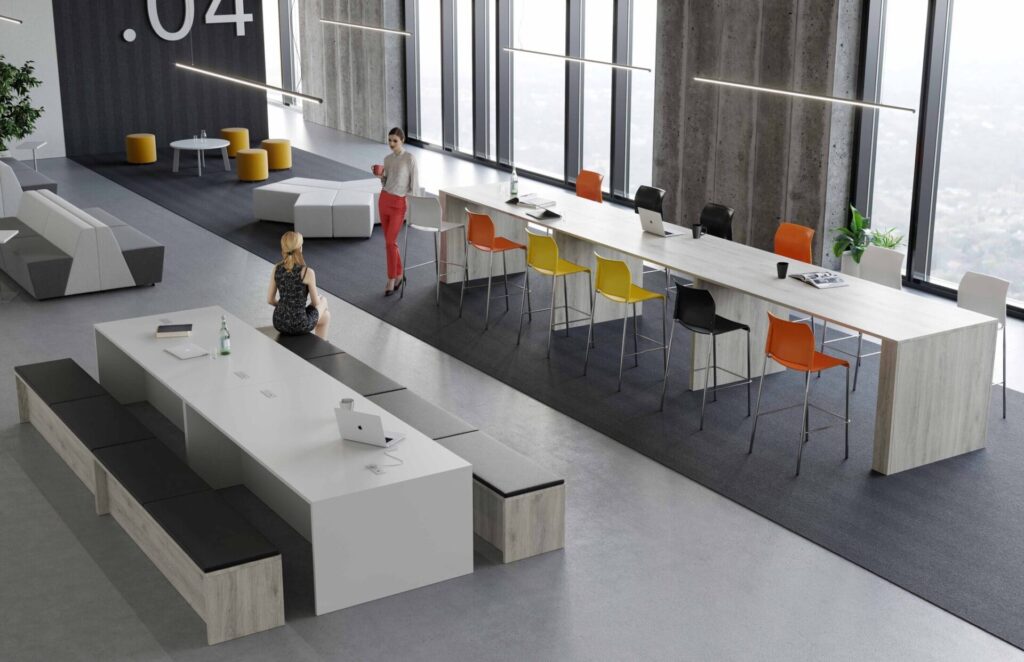
Optimizing Tech Usage with Strategic Seating Arrangements
While technology is crucial in modern meetings, its full potential can only be realized when integrated seamlessly with the space’s physical layout. As the Steelcase study highlights, seating arrangement plays a significant role in ensuring that technology enhances—not hinders—the meeting experience.
- Viewing Screens and Interactive Tech: Seating arrangements must be made so that all participants can view presentations, screens, or interactive whiteboards. Semi-circular seating or configurations with staggered chairs can ensure that everyone can clearly see the screen, preventing technology from becoming a barrier to communication.
- Seating with Integrated Tech: Some seating solutions are now designed with integrated power sources and tech tools, making it easy for participants to plug in their laptops or tablets without needing to move. These seats can also include adjustable armrests with built-in controls for screen viewing or video conferencing.
As businesses adapt to the changing nature of work, designing conference rooms and meeting spaces has become more important than ever. The evolution of these spaces—from formal, rigid environments to flexible, collaborative settings—reflects a shift in how we approach communication and productivity. With the growing influence of the resimercial movement, companies are increasingly looking for ways to make their meeting spaces more comfortable, inviting, and conducive to collaboration.
Ultimately, a well-designed meeting space can enhance focus, foster creativity, and promote open dialogue, leading to more successful outcomes. Whether through the careful selection of ergonomic furniture, the integration of technology, or the adoption of adaptable layouts, businesses realize that the environment in which people meet can be just as important as the discussions they have.
By thoughtfully considering their teams’ needs and embracing innovative designs, companies can create spaces that inspire, engage, and support the evolving demands of modern collaboration. D2 Office Furniture & Design Inc. is the ideal partner to help you navigate this process, offering access to a wide range of leading manufacturers and expertly curated solutions for creating collaborative, productive, and comfortable meeting spaces.
Designs for Dialogue
In spaces where ideas take flight,
The right design sets the tone just right.
Where meetings flow, and thoughts align,
A well-placed seat makes all divine.
The layout speaks, it guides the flow,
Encouraging ideas to freely grow.
A circle, a U, a round table near,
These forms create an atmosphere clear.
When comfort reigns and backs are free,
Engagement rises naturally.
Ergonomic seats that ease the strain,
Turn tired minds to focus again.
Tech tools abound in the modern space,
Laptops, tablets, all in place.
Devices thrive on steady charge,
Wi-Fi strong, their reach at large.
Charging hubs in tables, sleek,
Support the work that all must seek.
Wireless pads and ports to spare,
So meetings run without a care.
The room itself must also bend,
Adaptable, it meets the trend.
Flexible layouts, smart and bold,
Tailored to every need they hold.
From soft chairs to light that soothes,
The resimercial vibe improves.
Natural tones, a calming space,
Where thoughts emerge at a gentle pace.
Together we work, together we grow,
In spaces that help creativity flow.
The right design can set the stage,
For a productive and engaged workplace.

